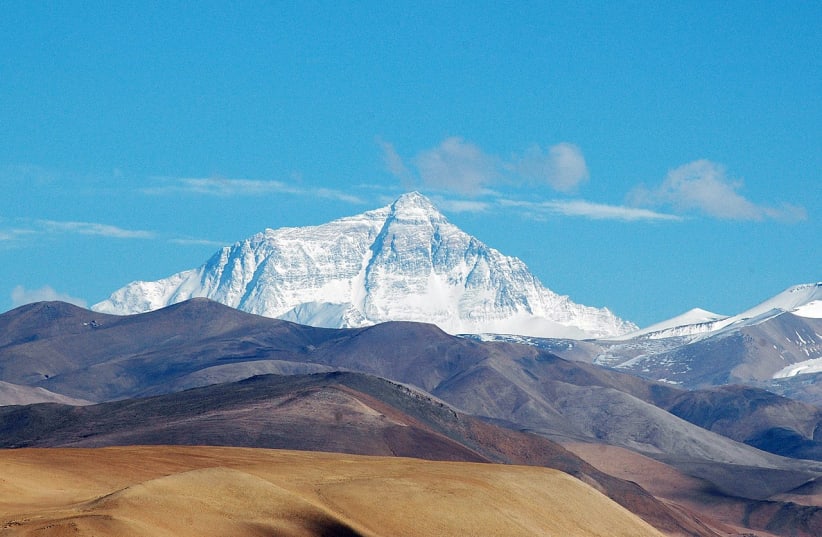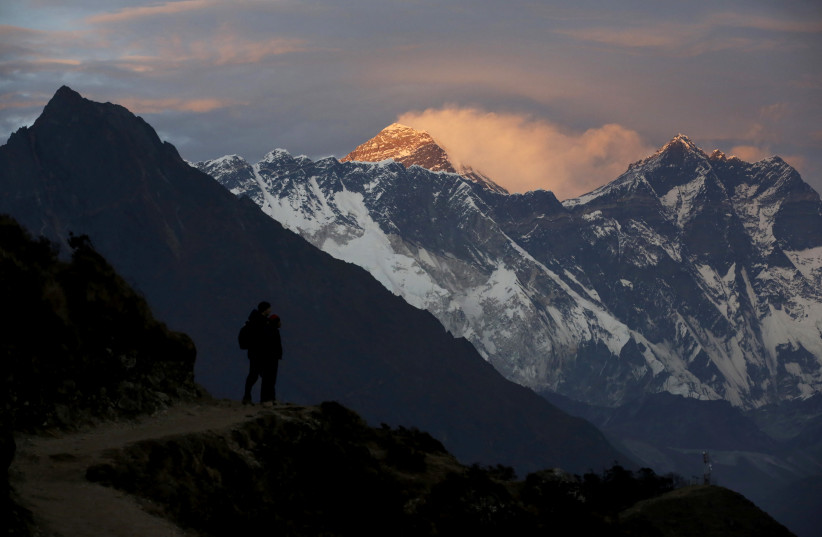Mount Everest is the tallest mountain in the world, but the Himalayan mountain's glacier is melting - and we're to blame.
The fact that Mount Everest is melting is, in and of itself, nothing new. Indeed, the retreat of mountain glaciers worldwide are well documented, though Mount Everest itself isn't fully understood in terms of weather, climate and glacier health at its highest peaks.
But a new study by researchers from the University of Maine, published in the peer-reviewed academic periodical Nature Portfolio Journal Climate and Atmospheric Science, has shed light on the shedding ice.
Is it humanity's fault that Mount Everest is melting?
To put it simply, yes, the mountain glacier atop Mount Everest, known as the South Col Glacier, is melting and declining, and yes, it is the fault of humanity.
The damage humans have already done to the tallest mountain in the world is well-documented. The mountain is a world-famous landmark and major tourist attraction. As such, it has been heavily commercialized.
And with the vast amount of people coming to climb the mountain, they have left plenty of things behind, most notably garbage and human waste. This has caused severe pollution, and that's especially problematic in the case of human feces and urine. This waste can end up polluting the environment and even going into water supplies off the base of the mountain.
There are as much as 12,000 kilograms of human feces left on the mountain each season, as noted in The Washington Post, especially because climbers have most commonly just defecated wherever convenient and have rarely disposed of it beyond burying it in the snow in hand-dug holes or throwing it away. In fact, the situation is so bad that some have dubbed the mountain's peak a "fecal time bomb."
But aside from the damage this causes, it is climate change that is an even bigger issue.
How is Mount Everest melting?
The researchers from the University of Maine's findings on this were the latest research from the 2019 National Geographic and Rolex Perpetual Planet Everest Expedition, which had sought to understand the impact rising temperatures around the world will have.
And these findings, as noted by Paul Mayewski, a glaciologist and director of the University of Maine's Climate Change Institute and who led the expedition, confirm that the situation on Everest isn't good, and it's our fault.
"One of the big questions posed by our [expedition was] whether the highest glaciers on the planet are impacted by human-source climate change," Mayewski explained in a statement.
"The answer is a resounding yes, and very significantly since the late 1990s."
The South Col Glacier's ice has been exposed due to less snow covering it. Rather, instead of snow, it's ice. This is an issue, because snow absorbs sunlight radiation more, which in turn leads to more melting.
Now that the ice is regularly exposed, it started thinning rapidly. According to the study, around 55 meters of glacier thinning occurred in just 25 years. For comparison, it took 2,000 years to form the ice in the first place there. This means that around 2,000 years-worth of ice has been lost in just 25 years.
What happens if Mount Everest melts?
There are a few major implictions. For people who just see Mount Everest as a mountain to climb, the current changes could spell bad news.
As Mayewski and his co-author Mariusz Potocki explained, the rapid decline of the glaciers could see there being less snow and ice to climb over. Instead, climbers will come face to face with exposed bedrock that they will have to overcome.
For everyone else, though, the problems get worse.
Mountain glaciers are an important source of water. In fact, many people depend on mountain glaciers for freshwater.
And for the Himalayan mountains like Everest, this is especially true. Over 1 billion people rely on Himalayan mountain glaciers for freshwater. That's around 12.8% of the global population.
To illustrate the sheer magnitude, more people rely on Himalayan mountain glaciers for water than the entire population of North America or Europe.
If the South Col Glacier is declining, that could eventually spell trouble for all the people who rely on it for water. And this goes for other mountain glaciers as well.
"Everest’s highest glacier has served as a sentinel for this delicate balance and has demonstrated that even the roof of the Earth is impacted" by man-made climate change, the study notes.
In other words, if even Everest isn't safe, the rest of the world is in trouble, too.
The Environment and Climate Change portal is produced in cooperation with the Goldman Sonnenfeldt School of Sustainability and Climate Change at Ben-Gurion University of the Negev. The Jerusalem Post maintains all editorial decisions related to the content.

